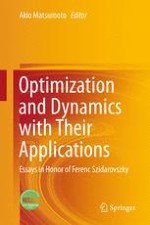2017 | OriginalPaper | Buchkapitel
A System Dynamics Approach to Simulate the Restoration Plans for Urmia Lake, Iran
verfasst von : Mahdi Zarghami, Mohammad AmirRahmani
Erschienen in: Optimization and Dynamics with Their Applications
Verlag: Springer Singapore
Aktivieren Sie unsere intelligente Suche, um passende Fachinhalte oder Patente zu finden.
Wählen Sie Textabschnitte aus um mit Künstlicher Intelligenz passenden Patente zu finden. powered by
Markieren Sie Textabschnitte, um KI-gestützt weitere passende Inhalte zu finden. powered by
